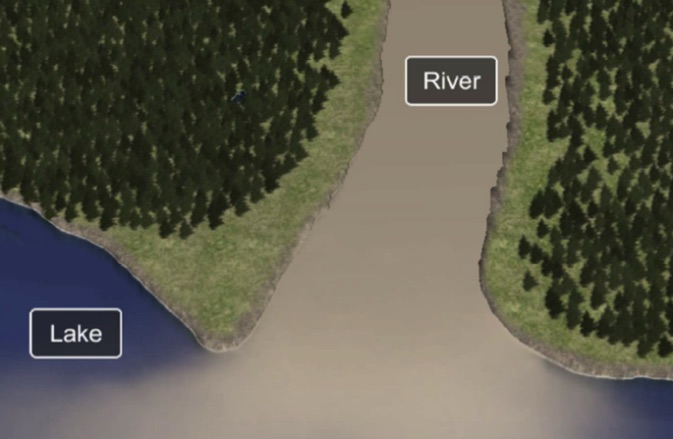Sample Scenario-Based Tasks and Discrete Questions
The NAEP science assessment measured students' familiarity with the natural world; their understanding of concepts, principles, laws, and theories of science; and their ability to engage in scientific inquiry.
In 2019, NAEP science transitioned from being a paper-based assessment to a digitally based assessment that was administered on tablets provided by NCES. A multi-step process was used for the transition which involved administering the assessments in both formats. Students were randomly assigned to take either the paper-based or digitally based assessment. Digitally based assessment questions included embedded tools for solving scientific problems as well as for performing simulated science experiments and investigations. Read more about the transition from a paper-based to digitally based assessment.
The digitally based assessment used standalone, discrete questions and question sets, as well as scenario-based tasks, which consist of sequences of connected questions and concepts integrated into a single real-world scenario. The assessment consisted of selected-response and constructed-response questions. Selected-response question formats include single- and multiple-selection multiple choice, inline choice, zone, matching, and interactive questions. Short constructed-response questions require students to write a brief response. Extended constructed-response questions have more parts for students to answer, requiring students to provide more than a single response or short verbal communication.
Through interaction with discrete questions and scenario-based tasks in a digital environment, students used an assortment of tools to apply their knowledge and skills across three content areas—Physical Science, Life Science, and Earth and Space Sciences—and four science practices—Identifying Science Principles, Using Science Principles, Using Scientific Inquiry, and Using Technological Design. Read more about the science content areas and practices.
At the beginning of the assessment, students viewed an interactive tutorial that provided the information needed to take the assessment on tablets; for example, the tutorial explains how to progress through questions, how to indicate answers for multiple-choice questions, and how to use on-screen tools effectively when answering questions. The interactive nature of the tutorial allowed students to familiarize themselves with the digital delivery system before beginning the actual assessment.
Sample Scenario-Based Tasks
Scenario-based tasks are designed to engage students in performing authentic scientific investigations and solving science problems through hands-on activities and computer simulations set in real-world contexts. The science assessment includes two types of tasks:
- Interactive computer tasks (ICTs) use real-world simulations to engage students in investigations that require them to use their scientific inquiry skills and apply their scientific knowledge in problem-solving situations.
- Hybrid hands-on tasks (HHOTs) combine hands-on investigations with digital activities. Students perform hands-on scientific investigations using materials in kits provided by NCES and use NCES-supplied tablets to view kit instructions, record results, and answer assessment questions.
Although task questions are connected, each science task is designed to enable students to progress through the task to completion even if they provide partial or incorrect responses to one or more questions. Individual task questions are designed so that students who have partial understanding can still provide a response and students who answer a question incorrectly still have an opportunity to answer subsequent questions correctly. The assessment includes extended tasks (30 minutes) and short tasks (15 minutes). Read more about how discrete questions and scenario-based tasks were administered to students.
Learn how students engaged with and performed on specific tasks. You can try the tasks yourself!
Grade 4 sample task in Life Science: How Seeds Travel
Investigate how different types of seeds spread to places where people do not plant them.
- Content area:
- Life Science
- Practice:
- Using Scientific Inquiry
- Task type:
- Hybrid Hands-on Task
- Task time:
- 30 minutes

Grade 8 sample task in Earth and Space Sciences: Clear Water
Investigate what is causing river water to turn cloudy and test different methods for controlling soil erosion.
- Content area:
- Earth and Space Sciences
- Practices:
- Using Science Principles, Using Scientific Inquiry, and Using Technological Design
- Task type:
- Interactive Computer Task
- Task time:
- 30 minutes

Grade 12 sample task in Physical Science: Bicycle Materials
Analyze the properties of different metals to determine which would be best for producing a lightweight and strong bicycle frame.
- Content area:
- Physical Science
- Practices:
- Using Science Principles and Using Scientific Inquiry
- Task type:
- Interactive Computer Task
- Task time:
- 15 minutes

Next on this page:
Experience the Science AssessmentSample Standalone Questions from the Assessment
Experience the science digitally based assessment as students did and try sample test questions administered in 2019.
In addition to trying sample scenario-based tasks, you can try standalone test questions that were also administered as part of the 2019 science assessment. After completing the questions, you can see the correct answers, scoring rubrics, and student performance results.
Try science questionsYou can also explore more examples of standalone questions released from the 2019 science assessment in the NAEP Questions Tool. Read more about the science framework that guided the development of the assessment questions.
Next on this page:
Item MapsItem Maps
One way to understand the NAEP science scale is by seeing questions that students performing at different points on the scale are likely to answer correctly. See item maps (grade 4, grade 8, grade 12) with examples of questions that reflect the skills and knowledge demonstrated by students performing at different points on the science scale within the score range for each NAEP achievement level.
